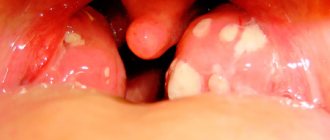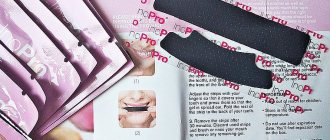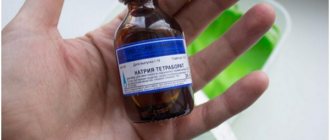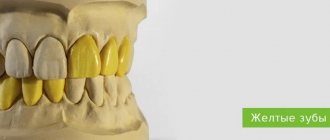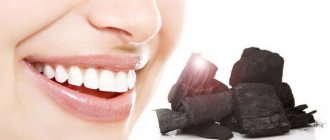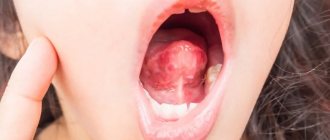Household blue is a mixture of dye and starch, which is sold in powder or liquid form. Typically, bluing is used to add freshness to bed linen or white shirts made of cotton and linen, and less often - to tint fabrics.
Blue comes in two types: with soluble and insoluble dye. Insoluble dye is cheaper, but is only suitable for refreshing laundry. Soluble can be used for dyeing fabrics.
Quick navigation through the article
Choice of blue
In order to paint with blue, you must initially choose the right material. It should be taken into account that:
- The blue must be water soluble. In this case, it is possible to achieve uniform dyeing of fabrics - insoluble dyes give streaks when used in concentrated quantities.
- It doesn’t matter whether you choose powder or liquid - both should be diluted in water until completely dissolved before use.
- Blues can be used both during washing and while rinsing clothes. For dyeing, it is better to choose a blue dye intended for rinsing.
- Blue can be used to dye white fabric or to freshen up blues and light blues. It will not change dark colors, but on other light fabrics it can give an unpredictable result. Most often, classic colors of jeans are tinted with blue.
- It should be noted that only natural fabrics can be dyed with blue; it does not stain synthetics.
Compound
What is the composition of blue for linen? It is a sodium aluminosilicate containing sulfur and sodium sulfate. In the USSR, grade 1 and grade 2 products were sold, which differed in intensity and shade. The blue should dissolve easily in water. Because of its lightness, it does not stay at the bottom for long. The composition of the Soviet product excluded the presence of organic dyes, Prussian blue and soot.
Coloring
To stain with blue you need:
- Wash the item that needs to be dyed and rinse the powder until clear water.
- Dilute the blue according to the instructions. There should be no clumps of coloring matter in the water; it should be of a uniform color.
- Fill the bath with water for dyeing.
- Place the item in the bathroom. It is important that the fabric is evenly spread out (twisting, folding and bending may result in uneven dyeing - this is why it is recommended to dye in the bathtub and not in a basin or other container). The water should completely cover the item being painted. To lightly turn the linen blue, it takes a few minutes, to dye it – from 1 hour. For jeans, 2 hours is usually enough.
- Dry the fabric in a straightened state - the color may change in folds and creases.
Why do you need laundry blue? – composition and instructions for use
Household blue is considered a mixture of dye and starch, sold in powder or liquid form. The substance is usually used as a bed linen freshener. Linen bluing allows you to make linen and cotton shirts white. It is also used for tinting materials. More details about this tool are described in the article.
Blue for linen is divided into 2 types: with soluble and insoluble dye. The second option is considered cheap; it is used only when refreshing products. Soluble - for dyeing clothes.
Procedure
How is blue linen used? The instructions will allow you to perform the procedure correctly:
- Dilute the substance according to the instructions. There should be no clots left in the water; it should be uniform in color.
- The bath needs to be filled with water.
- Then you should lay out your clothes in the bathroom. Uniformity is necessary so that when dyeing you get one color. The water should cover the item. For a slight bluing, a few minutes are enough, and for coloring from 1 hour. For jeans you need 2 hours.
- Then the item must be dried flat.
Instructions for use for adults
In the case of stomatitis, the nature of the therapeutic course using this solution is determined by the clinical characteristics of the case, the severity of the disease and the age of the patient.
Treatment of inflammation in patients of all age categories is carried out by treating the oral mucosa.
When treating an adult, the drug must be used at least 15 times within 24 hours. For medicinal purposes, only an aqueous solution is used, which under no circumstances can be replaced with methylene blue alcohol, which, unlike the first, can burn the mucous membrane.
In the acute form of the pathology, in the first few days of treatment with the medicine it is necessary to treat the entire surface of the oral cavity. As improvements occur, the product is applied pointwise using a cotton swab. This approach will prevent the development of irritation.
Upon completion of the therapeutic course, doctors advise treating the mucous membrane with sedatives. You can use sea buckthorn oil, flax seed extract, or an oil solution with vitamin A.
Daily use of methylene blue is highly effective only in the case of bacterial, aphthous, catarrhal, traumatic and angular stomatitis.
The remedy helps to get rid of the acute form of the disease in 7 days. But to cure a chronic pathology it will take more time - the disease goes away in about 3 weeks. Therapy must be continued until no ulcers remain in the patient's mouth.
Attention!
Blue is a dye, so the urine of a patient using the medication takes on a blue tint - this is normal. With the end of the course the situation returns to normal.
Recommendations
When painting with blue, you must remember that:
- High-quality blue does not stain your hands or bathtub. If traces of bluing remain, the item can be damaged during bluing - the fabric will become stained.
- Blue cannot be called a permanent dye - the item will fade with each wash, and the procedure must often be repeated again. To obtain a lasting effect, you should use special fabric dyes.
To preserve the natural blue color of the item longer, you can add a little regular table salt to the water when rinsing.
Share this article
with friends on social media networks:
Household blue is a mixture of dye and starch, which is sold in powder or liquid form. Typically, bluing is used to add freshness to bed linen or white shirts made of cotton and linen, and less often - to tint fabrics.
Blue comes in two types: with soluble and insoluble dye. Insoluble dye is cheaper, but is only suitable for refreshing laundry. Soluble can be used for dyeing fabrics.
Starch: the final stage
The last step left is to starch the tulle at home. This will give the sheer curtains shape and extra shine.
- Dissolve 250 g of dry starch in a bowl of water (about 10 liters), mix well until smooth.
- Soak the washed curtains in the solution for five hours.
- Take it out of the water.
- Don't squeeze, let it drain.
There are many ways to quickly bleach tulle at home. If you are not satisfied with one method, try another. Do not forget and do not be lazy to wash the tulle, as dust collects in it, causing respiratory diseases. The health of all family members depends on the cleanliness of your apartment.
blue for linen in stock. This is a powder for quickly enhancing the color of white or blue bedding and clothing made from natural fabrics. Currently, there are many powders that contain bleaches and various color additives for additional color saturation. But nevertheless, blue remains the most accessible substance, which gives fabrics not only freshness and newness, but also the desired shade if the blue substance is used as a dye.
Blue is most often starch, the composition of which is combined with blue mineral paint, mainly ultramarine, blue aniline dyes, indigo carmine, Paris blue or Prussian blue. Household blue is available in liquid, paste or powder form and is divided into two types: soluble and insoluble. Dyes that are highly soluble in water guarantee more uniform toning, coloring and saturation. Insoluble ones are much cheaper and are mainly suitable for refreshing linen made from natural fabrics. You can buy fabric blue in any store in the household chemicals department.
Coloring
To stain with blue you need:
- Wash the item that needs to be dyed and rinse the powder until clear water.
- Dilute the blue according to the instructions. There should be no clumps of coloring matter in the water; it should be of a uniform color.
- Fill the bath with water for dyeing.
- Place the item in the bathroom. It is important that the fabric is evenly spread out (twisting, folding and bending may result in uneven dyeing - this is why it is recommended to dye in the bathtub and not in a basin or other container). The water should completely cover the item being painted. To lightly turn the linen blue, it takes a few minutes, to dye it – from 1 hour. For jeans, 2 hours is usually enough.
- Dry the fabric in a straightened state - the color may change in folds and creases.
Recommendations
When painting with blue, you must remember that:
- High-quality blue does not stain your hands or bathtub. If traces of bluing remain, the item can be damaged during bluing - the fabric will become stained.
- Blue cannot be called a permanent dye - the item will fade with each wash, and the procedure must often be repeated again. To obtain a lasting effect, you should use special fabric dyes.
To preserve the natural blue color of the item longer, you can add a little regular table salt to the water when rinsing.
How to dye jeans
Before choosing a method to update the color, you need to decide how to dye your jeans and what products to use.
To update your jeans at home, you can use the following products:
- The most common painting option is blue. This method is very simple, but the result will not last long.
- So-called boiled jeans can be obtained using potassium permanganate. In this case, the result depends on skill and experience, since the process is quite complex.
- You can purchase ready-made aniline dyes. By following the instructions on the package, you can quickly get the desired effect.
- To obtain a more durable result, acrylic paints are suitable.
- Jeans can also be dyed in the washing machine using powder dyes. The painting process is simple, but there is a small selection of shades available.
Blue
Affordable and inexpensive painting options include bluing. But, using this product, it will not be possible to radically change the color of the product; you can only make it blue.
Blue can be purchased at any hardware store.
How to dye jeans blue:
- Dilute the blue in water whose temperature is less than 30 degrees. The brighter the color you want, the more product you need to use. To get a lasting shade, you can add 2 tablespoons of salt to the solution.
- Place the jeans in the solution.
- Leave them for a couple of hours. To ensure uniform painting, the product must be turned over periodically.
- Rinse your pants in cold water.
- To fix the color, rinse them in a weak vinegar solution.
The resulting result will begin to wash off immediately after the first wash, so this method of painting cannot be called optimal.
Powder painting
Using powdered dye and a washing machine, you can dye your jeans black. To avoid unexpected results, do not add washing powder and fabric softener to the washing machine. Jeans need to be washed first.
How to dye jeans in the washing machine:
- turn the product inside out;
- place the jeans in the washing machine;
- pour coloring powder into the drum;
- set the washing temperature specified on the product label;
- start the standard washing program;
- take out the painted item and rinse in cool water;
- rinse your jeans in a vinegar solution;
- wash them in a washing machine with washing powder;
- dry.
The result of dyeing is a durable, bright color. You should not worry about the washing machine - the use of dye will not affect its functionality in any way. The maximum that can happen is painting the rubber seals. But this problem can easily be solved by wiping them with a damp cloth.
Acrylic paints
Using acrylic paints, you can apply any design to the fabric, which will help hide problem areas and make the item unique and inimitable.
But this method is short-lived, since after several washes the color of the paint will begin to fade, and may even begin to fade. Therefore, this method is not suitable for everyday items that are often washed.
Aniline dyes
Among textile dyes, aniline dyes are the most popular. This is due to its ease of use and lasting results.
To correctly calculate the dosage, before starting work you need to read the instructions and recommendations on the packaging.
To dye jeans, you need to boil them in a dye mixture with salt, stirring occasionally. Then rinse in vinegar solution and dry.
Selection of household chemicals: 3 options
In hardware stores you can buy products created specifically for fabrics that require careful handling. They are safe and do their job quite well. They are good because they contain bleach and even “starch.”
Three types of “washing agents” allow you to restore the whiteness of tulle.
- The simplest powder. Both “automatic” and “manual” will do. They can be used if you need to bleach nylon tulle, or when at home there is a struggle for the freshness of organza or cotton curtains.
- Baby powder or gel. They contain special bleaching elements that protect the fabric from thread disintegration.
- Shampoo for fabrics. Prevents deformation of delicate products, cleans efficiently, but carefully.
Alternative methods
Products such as hair dye and fabric dye work well with dyeing denim. You can use bleach from household products.
Hair dye
You can update the color of dark products using hair dye. It is most convenient to carry out the painting process in a basin. Paint should be taken at the rate of 2-3 packages per pair of trousers.
How to dye jeans with hair dye:
Fabric paint
Dyeing jeans with fabric paint is not difficult, but this method requires boiling. An enamel bucket or large saucepan is suitable as a container for painting.
How to dye jeans blue with fabric paint:
- dilute the paint composition according to the instructions;
- soak the product in the coloring composition;
- put the container on the fire and boil, stirring occasionally, for at least an hour;
- take out the jeans and let them cool;
- rinse them in warm water, but not hot, then in cold water;
- place the trousers in the vinegar solution for 20 minutes;
- Wash the product by hand using washing powder.
White
White painting process:
- Prepare 1 cup of bleach and dissolve it in water;
- twist the jeans tightly and secure;
- Place them in a container with bleach and boil for 15 minutes. During boiling, you need to ensure that they are completely immersed in the bleaching composition;
- take out the trousers and dry them.
powder, white, blue and starch
Are you interested in detergents and how to return things to their white color? We will now teach you how to bleach white things, what folk remedies are available for this, and how to restore their original color.
Unfortunately, our favorite whites tend to take on shades of yellow and gray. Favorite T-shirts, dresses, skirts lose their original whiteness and look worn and faded. But this problem can be dealt with. There are some simple tips and folk methods that will help you return your items to their original white color and bleach them effortlessly. And since white things can be bleached using methods known to us.
Bleach powder and whiteness
- Dissolve bleach powder or bleach in water, at the rate of 20 grams per 10 liters of water. Place the laundry in water and boil.
Different types of fabric require different water temperatures. If you are bleaching artificial fabrics on things, then you can heat the water to maximum 50 degrees, cook for 20 minutes and then rinse. Cotton and linen items should be bleached at a higher temperature, but not brought to a boil.
Bleaching and disinfectants for whitening clothes are suitable for almost all fabrics. Bleach can be used both while soaking and after washing.
- Wet the laundry, soap it and put it in water with a Clorox solution – 1 tbsp. spoon per liter of water. After 4 hours, wash the laundry with soap and rinse.
- You can also use hydrogen peroxide or hydroperite. You will need 3 tbsp for a basin of water. peroxide or 9 tablets of hydroperite. Soak the laundry in the solution for 30 minutes and then rinse.
- Another method is potassium permanganate. Add a little potassium permanganate and about 180 grams of washing powder to a bowl of hot water, put already washed clothes in the water and cover with plastic. After the water has cooled, the items can be taken out and rinsed thoroughly.
After bleaching clothes, it is better to rinse clothes twice. First in warm water, then in cold water. If you are not satisfied with the result obtained, you can repeat the procedure.
Blue for washing
In the old days and to this day, many women use blue. Blue emphasizes whiteness. It can be in the form of a powder or liquid consistency. If the blue is in powder, then it is better to put it in a bag made of several layers of gauze and lower it into warm water. Wait until the water turns colored and then remove the bag. Stir the solution and dip old, captivating laundry into it.
Starch for bleaching
There is also one popular folk way to give your linen a new look. Dissolve half a cup of starch in 3 glasses of cold water. Then gradually pour the diluted starch into 3 liters. boiling water. And rinse your laundry there. It is better to iron starched linen while damp. Also, now all stores sell powder – Starch – a product for starching collars and cuffs. You will need 2 tbsp. spoons per 1 liter of water. Wait until the water boils and only then rinse your clothes in the solution.
And a couple more useful tips to ensure that your things always remain white. Do not wash white items with colored items. Wash linen and cotton items separately from wool and synthetic items.
sovetprost.ru
Caring for painted products
After the jeans have acquired the desired look, the duration of their use depends on proper care.
Before washing, be sure to fasten all zippers and buttons and turn the product inside out.
For jeans, hand washing in warm water is recommended. Moreover, you cannot sprinkle washing powder directly on your jeans; it must be dissolved in water in advance. Also, do not use powder containing bleaching components.
To prevent the paint from washing out for a long time, you can use laundry soap instead of powder when washing.
If hand washing is not possible, you can wash the clothes in the washing machine on a delicate cycle.
If you follow simple care rules, your jeans will delight you with their appearance for a long time.
Some housewives doubt whether it is possible to dye jeans blue. “Grandma’s” trick has been known for a long time: if a thing in blue shades has lost its former brightness, then with the help of blue it can be renewed. It is not difficult to dye chintz, satin, or linen fabric. But it’s worth understanding whether this advice applies to denim.
Do I need to rub, twist, iron?
Before making the tulle snow-white, you need to prepare for this process according to all the rules:
- shake out the cloth to remove dust;
- stop using chlorine-containing products;
- temperature for washing tulle - no higher than 40°C (hot water will ruin the fabric, and cold water will not cope with dirt);
- the best detergent for washing is liquid;
- if you use powder, it must first be dissolved;
- the fabric does not need to be rubbed;
- so that the curtains are without folds, they are not twisted;
- do not dry the tulle in the sun - you will get a yellow color;
- To iron the tulle after washing, you don’t need to take an iron: you just need to hang wet curtains on the curtain rod.
Is it possible to dye jeans blue?
Water-soluble and water-insoluble dyes can be used as a blue for dyeing jeans. These can be liquid or powder.
- Prussian blue;
- indigo carmine;
- Paris blue;
- ultramarine;
- anilic dyes.
All these types of dyes can be used when dyeing jeans, you just need to take into account some of the characteristics of the dyes. For example, Prussian blue can only dissolve in water together with oxalic acid. Anil dyes become discolored in the sun, some of them acquire a reddish color when ironed. Ultramarine is quite cheap, but it does not dissolve. Insoluble paints stain fabric worse and are more difficult to work with. There may be difficulties due to uneven dyeing, especially on heavy items: insoluble crystals can stain clothing in the form of stains.
It should be taken into account that if there is embroidery on jeans, it will inevitably deteriorate and turn blue. The item will look washed out and untidy, and bright embroidery threads will have a dirty effect.
Denim items in shades other than blue cannot be dyed blue. Blue and light blue shades that need to be refreshed or re-tinted can be used. It is acceptable to dye white and light gray jeans, which will turn blue when used with bluing. The final shade will in any case depend on the original color.
A few important facts about blue
- May be a good alternative for those who do not want to use whitening powders. Some simply do not respect such chemistry, and some are scared by the price of such powders.
- If you purchased a quality product, it will not stain your hands or the container in which you mixed it.
- Blue is not a permanent dye; it only gives a tint that washes out. You will have to repeat this procedure to maintain the desired effect. But simple salt can prolong the coloring effect. Add it to the blue and the color will last longer.
- If you want a good result, then do each thing separately. You can’t just throw everything away and expect a great result.
- Blueing requires skill. Train on something you don't mind throwing away.
- Be sure to read the instructions. Earlier in the article we explained the reasons for this mandatory step. If the composition contains starch, then after dilution, boil the liquid and strain it.
- Never try to replace blue with something blue. There were some people who thought that they could just add a blue T-shirt to the white one. But they only ruined the white things.
Store the bluing in a place out of the reach of children. The storage container must be tightly closed. We hope you liked the article and clarified some facts about blue. We will be glad even if a small part of the information was new and useful for you.
How to dye jeans blue at home
You can properly blue your jeans either manually or in a washing machine. Dyeing by hand is a little more laborious, but soaking for many hours provides a more permanent result. Painting in a washing machine guarantees more uniform coloring, since the constant movement of the drum prevents the paint from settling on one particular area. By constantly mixing water and paint, the item is painted to a higher quality than by hand.
How to dye jeans by hand
Blue is diluted in cold water and poured into warm water. It is very important to do everything as required by the instructions, since substances are partially colored during the washing process, and partially during rinsing. You need to calculate 0.5 g of dye per kilogram of dry denim.
After the paint has been prepared, the jeans are carefully straightened and dipped into the blue solution. It is better to take bulky dishes for this, for example, a wide basin or a small bath, since the fabric should be spread out in one layer. If the material is folded in several layers, or there are folds on it, it is guaranteed to be unevenly colored and will have to be repainted. The water should be at the same level and soak evenly.
After some time, the product is removed. Here we must immediately make a reservation. If you are generally satisfied with the original color and just need to refresh it a little, 2 hours of soaking in blue will be quite enough. If the shade of the jeans is dull and you need full coloring, it will take 12 hours. During this time, the rough fabric will have time to soak properly, the result will be durable and rich.
Next, the denim item is rinsed in two or three waters. Be sure to add 5-7 tablespoons of food vinegar so that the shade is firmly established. Table salt added in the same amount to 10 liters of water has a similar effect.
You need to dry dyed jeans in a well-ventilated area so that the unpleasant smell of vinegar disappears. Be sure to avoid direct sunlight.
How to dye jeans blue in the washing machine
Not everyone wants to bother with hand dyeing. You can also blue your jeans in the washing machine, the main thing is to do it correctly. This method will allow you to carefully paint your favorite item without getting your hands dirty. To do this, you just need to wash your jeans in blue.
To dye jeans in the washing machine, the liquid dye is checked for the presence of lumps, and the powder is diluted in water. The proportions are the same as for manual dyeing: 0.5 g of dye is taken per 1 kg of dry denim.
The diluted blue is immediately poured into the drum of the washing machine. Salt or vinegar, which fixes the shade, is also immediately added to the drum. No need to add washing powder or conditioner. Select the intensive wash mode for thick items at high temperatures and set the longest mode.
After the jeans have been bluish, the shade is fixed again. Vinegar is poured into a wide basin and mixed with water (5-7 spoons per 10 liters). The item is straightened out in a basin and kept for an hour. Wring out and dry in a ventilated place, out of direct sunlight.
Blue for linen - instructions for use
Pin Send by email SMS mail
Household blue is considered a mixture of dye and starch, sold in powder or liquid form. The substance is usually used as a bed linen freshener. Linen bluing allows you to make linen and cotton shirts white. It is also used for tinting materials. More details about this tool are described in the article.
Blue for linen is divided into 2 types: with soluble and insoluble dye. The second option is considered cheap; it is used only when refreshing products. Soluble - for dyeing clothes.
What is methylene blue
An aqueous solution of methylene blue is a synthetic antiseptic that has been used externally in dentistry for a long time to treat stomatitis, gingivitis, caries, and periodontitis.
It is also used to treat abscesses, burn wounds, trophic ulcers, bacterial, viral, fungal mold diseases. For nursing mothers, medical blue is recommended for the purpose of disinfecting pathogenic bacteria and fungi in cracked nipples, which protects babies from getting thrush.
Oral administration - for diagnosis and treatment of diseases of the genitourinary system. Occasionally used in the treatment of neuralgia. Effectively used for poisoning. In veterinary medicine, the drug serves as a medicine for healing the mucous membranes of the mouth, ears and skin of animals. Elimination of fungal infections of aquarium fish.
A 1% aqueous solution has a pronounced blue color and permanently stains the surfaces of skin, fabrics, and others. When using, it is important to check individual tolerance. Do not allow the substance to get into your eyes. Available in ampoules, bottles, alcoholic, aqueous preparations and in the form of powders.
Beneficial features
The pharmacological effect of the alkaline drug is detrimental to many pathogenic microorganisms. The scope of application of the antiseptic is quite wide, thanks to its disinfecting and restorative properties:
The use of methylene blue as an antiseptic is due to the mechanism of its action: when it comes into contact with damaged infected cells of the body, the blue from stomatitis forms a poorly soluble strong compound with a foreign protein of the pathogenic microorganism, as a result of which the virus (bacterium, fungus) instantly dies.
on this topic
Where to buy blue for stomatitis? Everything is simple here: the drug is sold in almost every pharmacy. We also recommend that you get acquainted with equally effective ways to combat stomatitis at home:
Based on many years of observations, it was noticed that blueing in the treatment of stomatitis gives very good results. Due to its wide range of actions, the product is recommended in all children's hospitals.
Dyeing jeans fabric, not only trousers, but also other things made from denim, can give these things a new embodiment and a second life. To carry out this procedure, not only the usual bluing will do, but you can also dye blue and dark blue jeans, as well as gray or white jeans.
Application for stomatitis
The drug is non-toxic because it is not able to penetrate blood vessels, so it is prescribed even to infants. Treatment of blue stomatitis in children is carried out by a pediatrician; on his recommendation, further examination by another specialist is prescribed.
Blue for stomatitis was popular 10-20 years ago. Therefore, now when a child is diagnosed with stomatitis, mothers and, especially, grandmothers often remember the bluing. Does blueing help with stomatitis? Let's figure it out together.
Methods of application
- The alcohol solution is used only externally for pyoderma, chickenpox, herpes, and for treating wounds. It is not recommended to apply it to mucous membranes.
- A 1% aqueous solution of methylene blue can be used externally (applied to the skin) and topically (applied to the mucous membranes).
- 1% aqueous solution in 25% glucose solution for intravenous administration - administered intravenously slowly for poisoning with hydrogen sulfide, carbon monoxide, cyanides, aniline, nitrites, as an antidote.
- A 0.02% aqueous solution can be used to wash the urethra and bladder.
- Methylene blue powder is taken orally for cystitis and urethritis.
As can be seen from the above, an aqueous solution of blue can not only be applied to the mucous membranes, but even taken orally and administered intravenously, therefore blue is quite safe.
Blue has antiseptic properties, which means it kills harmful microbes in the oral cavity.
Therefore, blue can be used for stomatitis.
How to use?
- For stomatitis, only a 1% aqueous solution of methylene blue can be used.
An alcohol solution of bluing is not used for stomatitis, because it causes discomfort in the mouth, increases pain, and can lead to burns of the oral mucosa. - For stomatitis, a 1% aqueous solution of methylene blue should be applied to affected areas (ulcers, blisters, etc.) on the oral mucosa 5-6 times a day after meals.
- A 1% aqueous solution of methylene blue for stomatitis is approved for use in children from birth.
Targeted use in dentistry
Methylene blue in dentistry acts as an effective anti-inflammatory agent and antiseptic.
Stomatitis on the lip
Source: https://DentalVbg.ru/raznoe/sinka-na-mashinu-2.html
Precautionary measures
As with any other dyeing, bluing also requires precautions.
- All painting manipulations should be carried out only with rubber gloves.
- When working with blue and vinegar, you must protect your eyes and mucous membranes. Acrid fumes can cause irritation. Therefore, it is appropriate to wear a medical mask.
- After dyeing an item using bluing, avoid washing this item with other clothes in the future due to the likelihood of shedding.
- All painting work should be carried out in a well-ventilated room.

